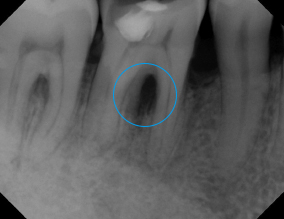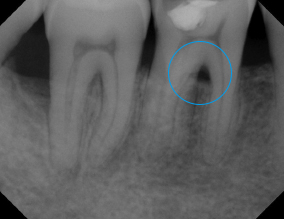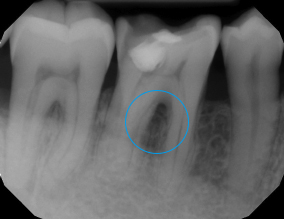Severe Gum Disease Treatment
 Gum disease is the result of the prolonged accumulation of bacteria, plaque, and tartar. The severity of gum disease can range from minor symptoms to excessive inflammation of the gum leading to conditions such as periodontal disease. A surgical solution can result in a messy situation, hence, we recommend getting your gums treated permanently with the help of a laser solution. A laser treatment will not only destroy and remove the cause of inflammation but also ensure that the remaining healthy tissues of the gum are left untouched. This will allow the regeneration of the gum tissues improving the smile.
Gum disease is the result of the prolonged accumulation of bacteria, plaque, and tartar. The severity of gum disease can range from minor symptoms to excessive inflammation of the gum leading to conditions such as periodontal disease. A surgical solution can result in a messy situation, hence, we recommend getting your gums treated permanently with the help of a laser solution. A laser treatment will not only destroy and remove the cause of inflammation but also ensure that the remaining healthy tissues of the gum are left untouched. This will allow the regeneration of the gum tissues improving the smile.
Comparison between Laser and traditional surgery for treatment of gum disease:
LANAP - Laser Assisted New Attachment Procedure
- Regeneration of bone and stimulates bone growth.
- Selective removal of the infected tissue.
- Minimal pain as there is no need to cut or sew.
- Need for retreatment would be highly unlikely.
- Shorter healing time. Usually very little discomfort on the very next day itself.
Traditional periodontal pocket reduction surgery
- Cutting the gingiva could expose root surface to potential root caries and could also increase the sensitivity of the tooth.
- Selective removal of the diseased tissue is not possible. Sometimes, the healthy tissue is also removed.
- Involves cutting and sewing, which is highly painful and uncomfortable.
- Would require retreatment after 5 years.
- The patient would experience pain and swelling for a few days after the surgery.



One year after treatment, bone has grown completely to the healthy level. No grafted bone, it is all your own natural bone.
Comparison with traditional surgery
Laser assisted new attachment procedure (LANAP) is a ground-breaking treatment for moderate and severe periodontitis. Unlike the traditional surgery that involves a lot of non-selective cutting, where there is a removal of both healthy and unhealthy tissue, this treatment method uses laser technology to selectively remove the diseased tissue and leave the healthy tissue unharmed to assist healing. Instead of removing the gum tissues to get rid of the pockets, it stimulates bone growth and helps you get rid of periodontal problems. Unlike the traditional surgery, that tends to require retreatment after about 5 years, it rarely requires retreatment.The fee is compatible, if not lower, compared to the traditional resection periodontal surgery. However, it gives much better results compared to the traditional method.
 LANAP is a surgical therapy designed for the treatment of periodontitis through regeneration rather than resection. This therapy using laser has been in use since 1994. It was developed and refined in Cerritos, California, by Robert H. Gregg II, DDS and Delwin McCarthy, DDS to achieve effective and predictable outcomes. The U.S. Food and Drug Administration cleared the LANAP protocol for the treatment of periodontitis in 2004.
LANAP is a surgical therapy designed for the treatment of periodontitis through regeneration rather than resection. This therapy using laser has been in use since 1994. It was developed and refined in Cerritos, California, by Robert H. Gregg II, DDS and Delwin McCarthy, DDS to achieve effective and predictable outcomes. The U.S. Food and Drug Administration cleared the LANAP protocol for the treatment of periodontitis in 2004.
In LANAP surgery, a variable free-running pulsed neodymium:yttrium-aluminum-garnet (Nd:YAG at 1064 nm wavelength) dental laser is used by a trained and certified dentist or periodontist to treat the periodontal pocket. The laser energy selectively removes diseased or infected pocket epithelium from the underlying connective tissue. The necrotic epithelium is stripped from the connective tissue at the histologic level of the rete ridges. Since the laser energy is quite selective for diseased tissue, the underlying pleuropotential connective tissue is spared, thereby permitting healing and regeneration rather than formation of a pocket seal by long junctional epithelium.
 In periodontics, the LANAP protocol is a process through which cementum-mediated periodontal ligament attachment to the root surface in the absence of long junctional epithelium is achieved for the treatment of moderate to severe gum disease (including gingivitis and periodontal disease). Stimulation of existing stem cells permits the formation of new root surface coating (cementum) and new connective tissue (periodontal ligament) formation (collagen) on tooth roots. The procedure’s success has challenged the old paradigm of periodontal healing in the absence of guided tissue regeneration barriers (GTR) or bone grafting materials (allografts).
In periodontics, the LANAP protocol is a process through which cementum-mediated periodontal ligament attachment to the root surface in the absence of long junctional epithelium is achieved for the treatment of moderate to severe gum disease (including gingivitis and periodontal disease). Stimulation of existing stem cells permits the formation of new root surface coating (cementum) and new connective tissue (periodontal ligament) formation (collagen) on tooth roots. The procedure’s success has challenged the old paradigm of periodontal healing in the absence of guided tissue regeneration barriers (GTR) or bone grafting materials (allografts).
Contact Sunnyvale Dentist Dr. Tao today for a consultation 408-737-2988!


